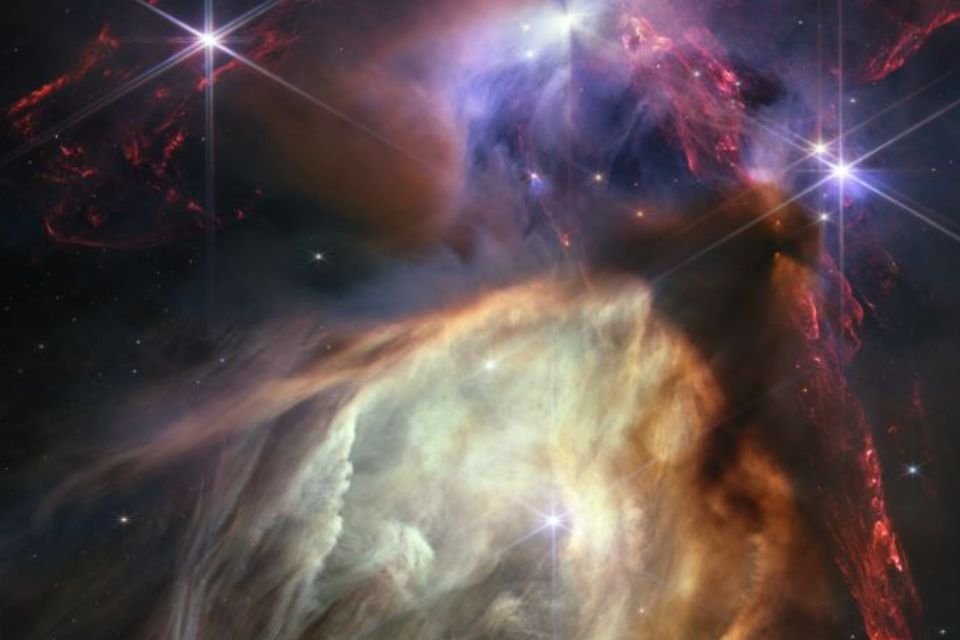The James Webb Space Telescope (JWST) celebrates the anniversary of its observations a year ago, as the telescope began collecting the first scientific data in space. To celebrate this event, the US National Aeronautics and Space Administration (NASA) released a new image taken by JWST; this time, a star forming region known as Rho Ophiuchi cloud complex.
The image shows the closest star forming region to planet Earth, about 390 light-years away, NASA said in a statement. The Rho Ophiuchi cloud complex is home to about 50 young stars, nearly all of which have a mass similar to or less than the mass of our Sun.
Some of the stars shown in the image have protoplanetary disks, suggesting that the region offers a favorable environment for the development of future planetary systems. The redder portions highlight massive molecular hydrogen dipole jets, a phenomenon that occurs when a new star “emerges from its cosmic cocoon.”
“In just one year, the James Webb Space Telescope changed humanity’s view of the cosmos by observing dust clouds for the first time and seeing light from the far reaches of the universe. Every new image is a new discovery and empowers scientists around the world. NASA Administrator Bill Nelson said “A world where they can ask and answer questions they could never have imagined,” he said.
James Webb and Rho Ophiuchi
James Webb’s infrared instruments demonstrate his incredible ability to capture images of the most complex regions by observing different wavelengths amid cosmic dust clouds. Proximity and lack of stars were other important factors that aided the JWST in a more detailed observation.

The image also shows the brightest star in the lower center, S1, which is considered the only star from the observation with a mass significantly greater than the mass of the Sun.. The darker areas represent denser parts of the region where thick cosmic dust forms the protostar formation process.
Besides being a stunning image, scientists are also excited by the sharpness of the wavelengths collected by the JWST instruments. According to the team, the telescope detected water, molecules with organic carbon, among other chemical compounds.
“Webb’s image of Rho Ophiuchi allows us to witness with new clarity a very short period in the stellar life cycle. Our own Sun experienced a phase similar to this a long time ago, and we now have the technology to see the beginning of the history of another star,” said the Space Telescope Science Institute. (STScI) James Webb Project Scientist Klaus Pontoppidan.
Did you like the content? So keep a close eye on all the news from the James Webb Telescope at TecMundo and take the opportunity to check out this one too: The Galaxy 13.4 billion years ago was found by the James Webb Telescope; see video
Source: Tec Mundo
I’m Blaine Morgan, an experienced journalist and writer with over 8 years of experience in the tech industry. My expertise lies in writing about technology news and trends, covering everything from cutting-edge gadgets to emerging software developments. I’ve written for several leading publications including Gadget Onus where I am an author.











